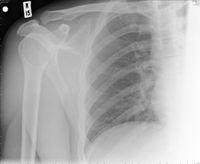| Sputnik : 03 Apr 2015 | © Flickr/ Adrian Barnes |
| Doctors are set to scan damaged bones and 3D-print the missing parts, which will later transform into the recipient's own tissue. The scientists of the Russian National Research Nuclear University developed a technique to convert animal bones into material that can substitute the damaged parts of human bones, the institution's press service said in a statement. The new substance is based on biological hydroxyapatite - a white powder that resembles cement when mixed with a biological polymer. It is soft and flexible like plasticine when kneaded but hardens after being placed on the damaged bone. |
"We have created material that the organism takes as original. The bone marrow contains mesenchymal cells that always migrate to the damaged tissue areas. They detect our matter as something that can take part in biochemical processes and start processing it to enable [cell] division. Regeneration is cell division itself. As a result, a new bone tissue is produced with its own blood vessels and nerve cells" professor Vitaly Guzeev explained in the statement.
The existing methods of regenerative medicine mainly presuppose the transfer of stem cells from a special incubator. Doctors see successful results if they manage to surround the cells with blood vessels. But the probability that the tissue will survive is about 50 percent, professor Guzeev noted.
"On the basis of hydroxyapatite, we prepared a liquid material that we can fill a 3D-printer with. For instance, a man with a craniocerebral injury undergoes tomography, then the image is sent to the [3D-] printer, which recreates an element completely matching the lost bone part. The material indurates during the printing process."
The material has passed clinical trials in Moscow and St. Petersburg, and marketing authorization is currently underway.
The new material can also be used in healing painkiller injections for people with aching joints.
Source

 RSS Feed
RSS Feed